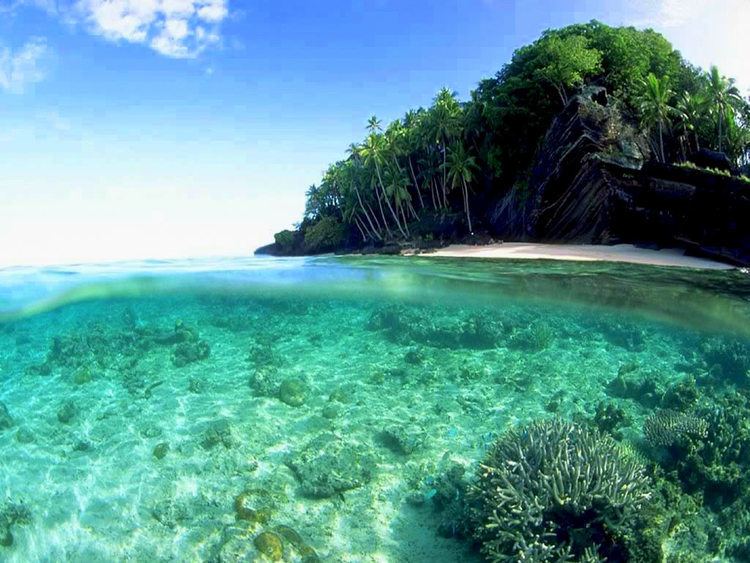Area rank 75th Width 106 km (65.9 mi) Area 10,388 km² Population 600,000 | Archipelago Viti Levu Group Length 146 km (90.7 mi) Highest elevation 1,324 m (4,344 ft) Elevation 1,324 m | |
 | ||
Points of interest Sigatoka Sand Dunes, Kula Eco Park, Sri Siva Subramaniya temple, Fiji Museum, Mamanuca Islands | ||
South pacific island viti levu fiji beach coconut palms
Viti Levu (pronounced [ˈβitʃi ˈleβu]) is the largest island in the Republic of Fiji, the site of the nation's capital, Suva, and home to a large majority of Fiji's population.
Contents
- South pacific island viti levu fiji beach coconut palms
- Map of Viti Levu Fiji
- Geography and economy
- Localities
- Politics
- History
- Other
- References
Map of Viti Levu, Fiji
Geography and economy
Viti Levu is the largest island in the nation, home to 70% of the population (about 600,000), and is the hub of the entire Fijian archipelago.
The island measures 146 kilometres (91 mi) long and 106 kilometres (66 mi) wide, and has an area of 10,389 square kilometres (4,011 sq mi). It is comparable to the size of the Big Island of Hawaiʻi, and slightly smaller than the U.S. state of Connecticut.
Geologists believe that Viti Levu has been submerged a number of times, and has been covered by lava and other volcanic materials. Earthquakes and volcanic eruptions account for the somewhat rugged terrain of the island, which is divided into roughly equal halves by a north-south mountain range. The centre of the island is forested and includes the nation's highest peak Mount Tomanivi (otherwise Mount Victoria) rising to 1,324 metres (4,344 ft).
The eastern side of the island experiences heavy rainfall, while the western side is noticeably drier in the range's rain shadow. Accordingly, sugar cane production thrives in the west, while a dairy industry is being built in the east. Fiji's biggest cattle ranch is at Yaqara, with 7000 head of cattle on its 70 square kilometres (17,000 acres), located halfway between Tavua and Rakiraki. The island is the only known home of one of the world's largest insects, the Giant Fijian long-horned beetle.
Localities
Viti Levu hosts the capital city of Suva, and is home to nearly three quarters of the population of the Republic (about 580,000). Other important towns, all around the coast, include Ba, Lautoka, Nadi, Nausori, Rakiraki, and Sigatoka. One major road has been built around the perimeter of Viti Levu. Well-known localities include Natadola Beach, Pacific Harbour (a resort center about 50 kilometers from Suva).
Politics
Eight of Fiji's fourteen Provinces are in Viti Levu. The Provinces of Ba, Nadroga-Navosa, and Ra comprise the Western Division, while Naitasiri, Namosi, Rewa, Serua, and Tailevu form the Central Division. In part because of its high concentration of Indo-Fijians, whose ancestors came mostly as indentured workers from India between 1879 and 1916, the political dynamics of western Viti Levu are somewhat different from those of eastern Viti Levu, where, apart from the multi-racial urban areas, indigenous Fijians are more heavily concentrated.
History
Viti Levu is believed to have been inhabited longer than the northern island of Vanua Levu. According to oral traditions, the first Melanesian settlers landed at Vuda Point and established Viseisei, believed to be Fiji's oldest settlement, although archaeologists refute this claim.
Other
The Canadian entrepreneur Peter Munk named his Klosters house after the island, as Viti Levu was where he and David Gilmour started the Southern Pacific Hotel chain in the 1960s.
